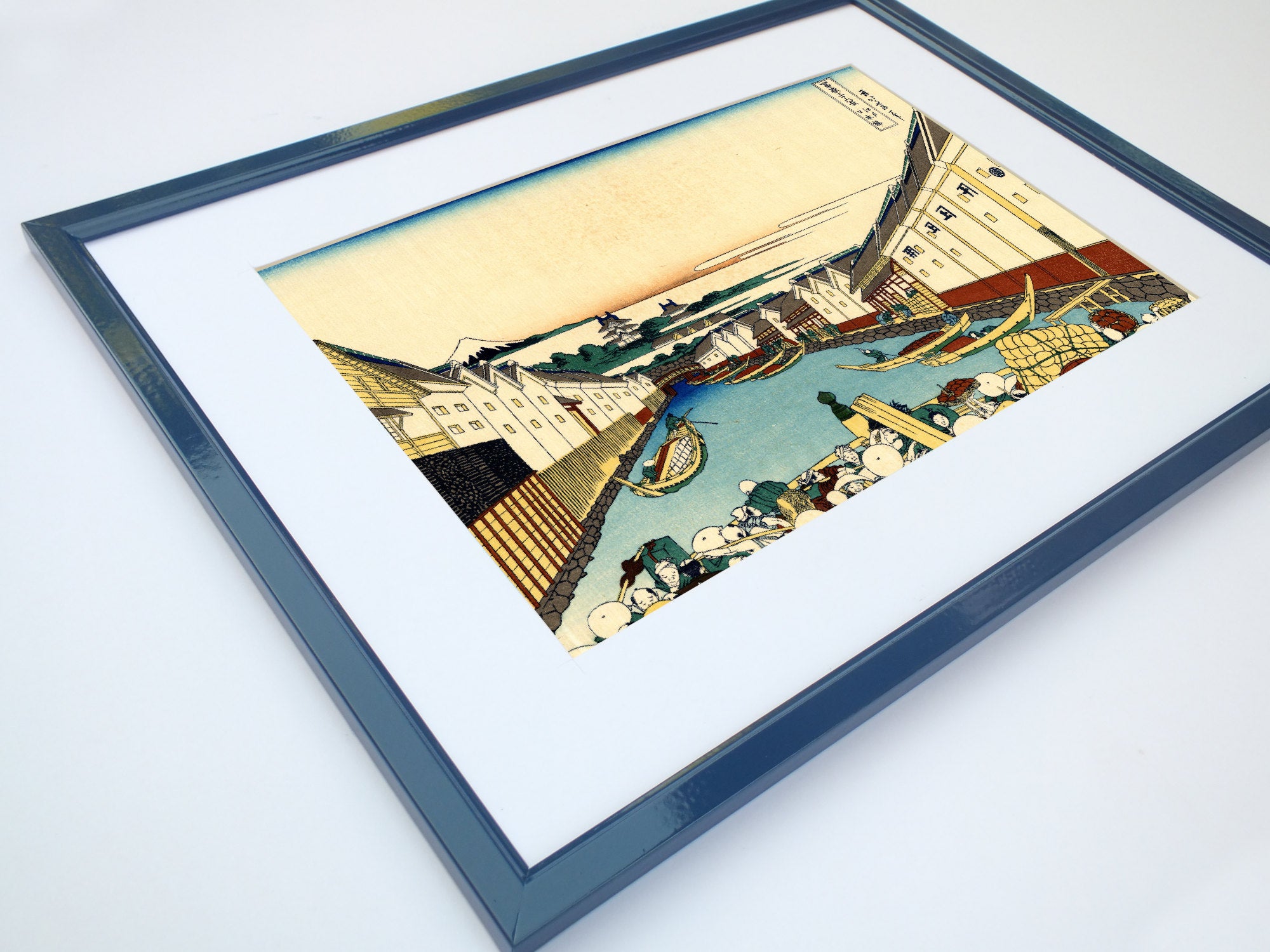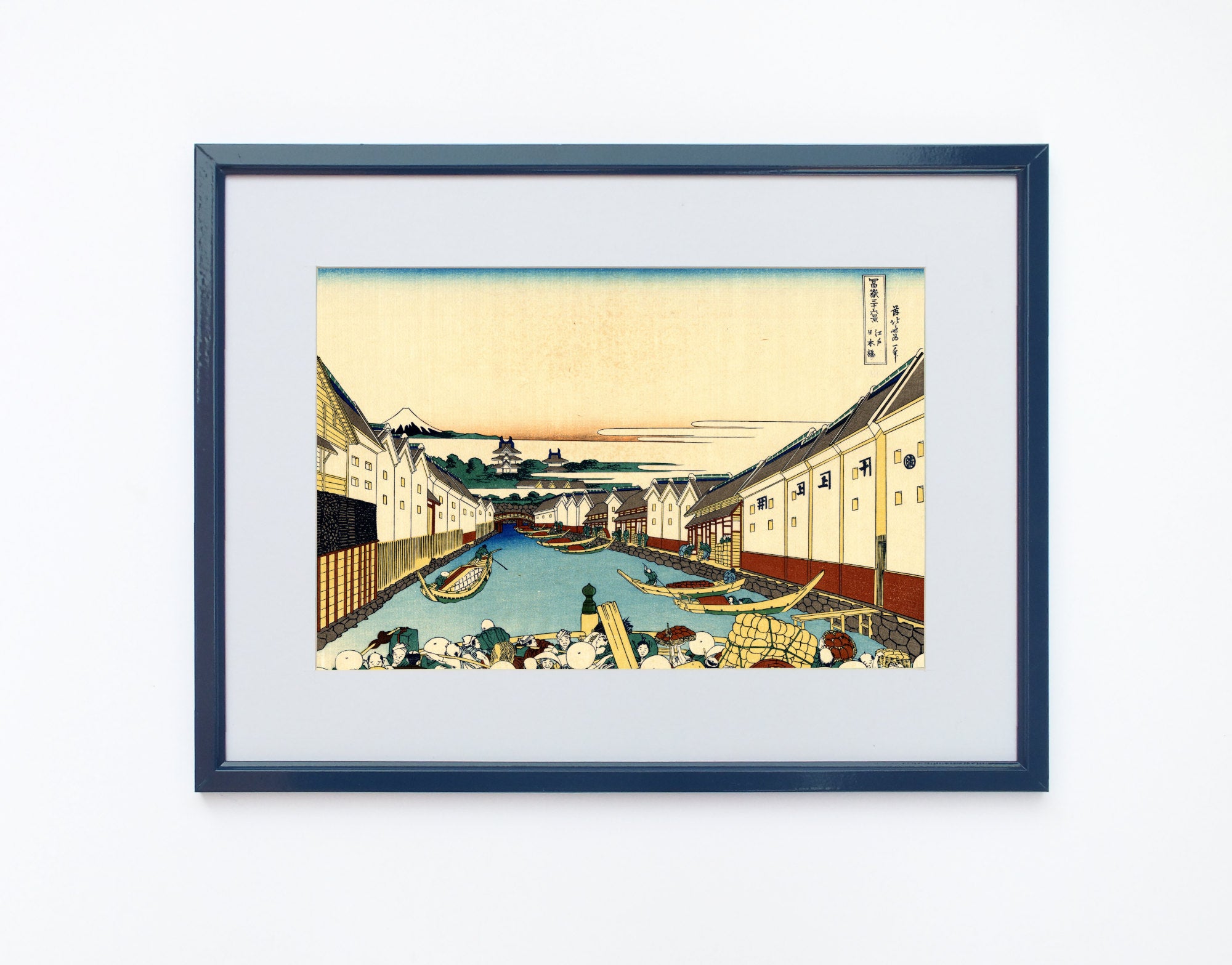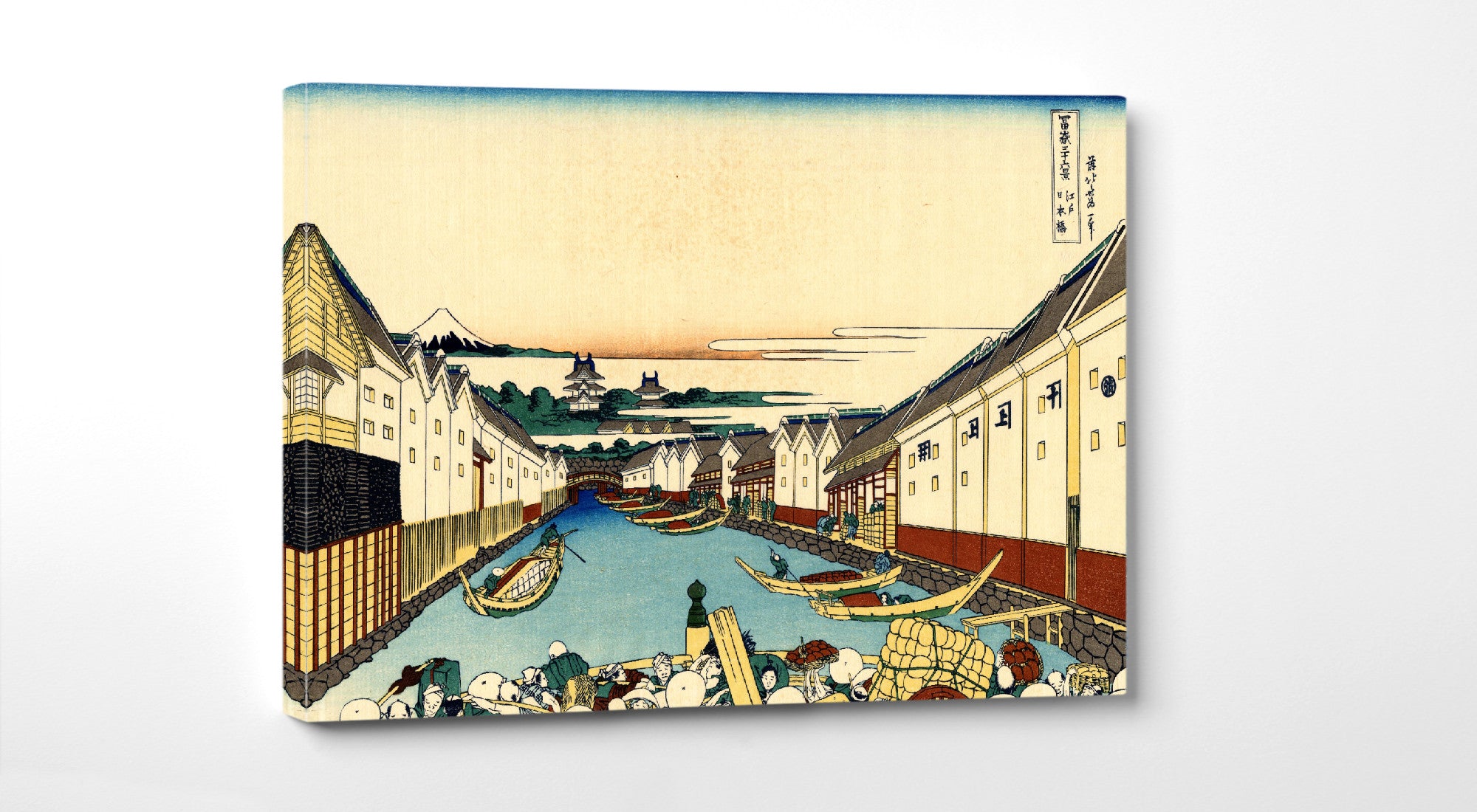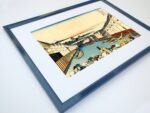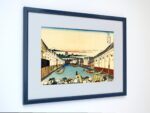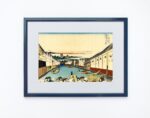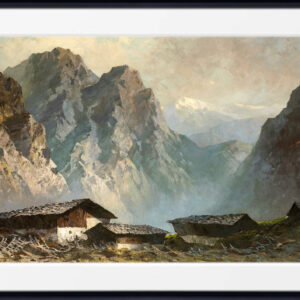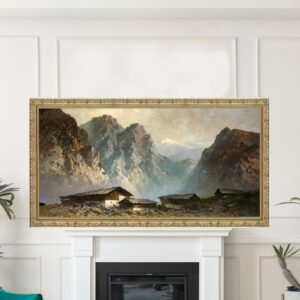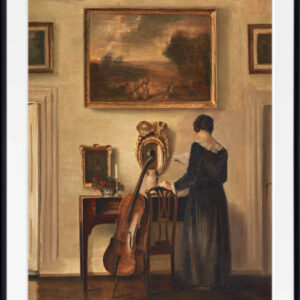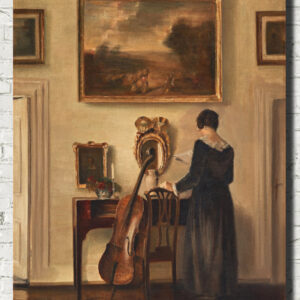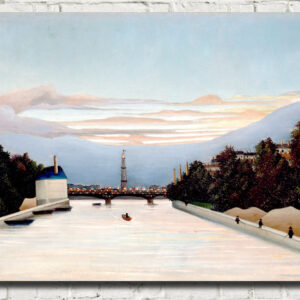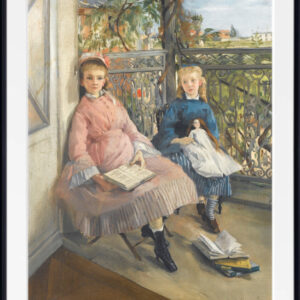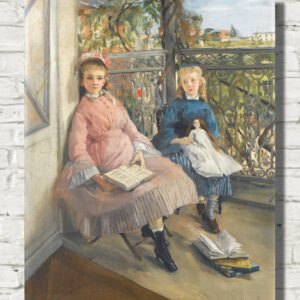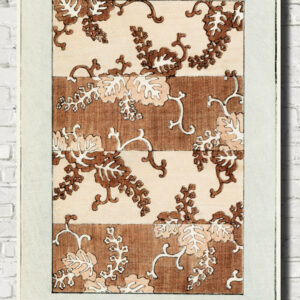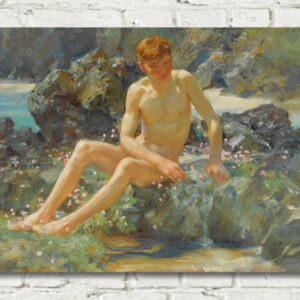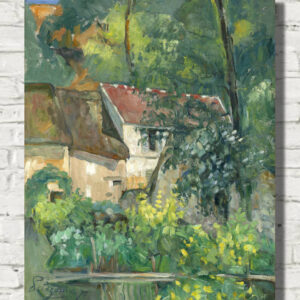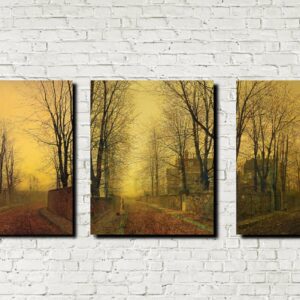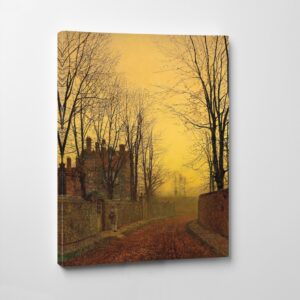36 Views of Mount Fuji, Nihonbashi bridge in Edo, Katsushika Hokusai, Japanese Print
The composition is interesting in that the image appears to be cropped and you wouldn’t be alone in believing the image had been altered on your screen but it hasn’t this is how it was painting. It is believed the thought behind this is to give the impression of you being part of the scene, scrambling among the bustling crowds as they attempt to cross the bridge. The chaotic scene makes the bridge itself barely viable, you can only make it out if you look very closely at the bottom of the piece and note the finial attachment on the gate post.
Katsushika Hokusai was a Japanese artist, ukiyo-e painter and printmaker of the Edo period. Born in Edo (now Tokyo), Hokusai is best known as author of the woodblock print series Thirty-six Views of Mount Fuji (富嶽三十六景 Fugaku Sanjūroku-kei, c. 1831) which includes the internationally iconic print, The Great Wave off Kanagawa.
Hokusai created the “Thirty-Six Views” both as a response to a domestic travel boom and as part of a personal obsession with Mount Fuji. It was this series, specifically The Great Wave print and Fine Wind, Clear Morning, that secured Hokusai’s fame both in Japan and overseas. As historian Richard Lane concludes, “Indeed, if there is one work that made Hokusai’s name, both in Japan and abroad, it must be this monumental print-series”. While Hokusai’s work prior to this series is certainly important, it was not until this series that he gained broad recognition.
All prints are made using archival art stocks and UV pigment inks to give up to 200 years life. Choose from unframed, framed and mounted and canvas panel options.

